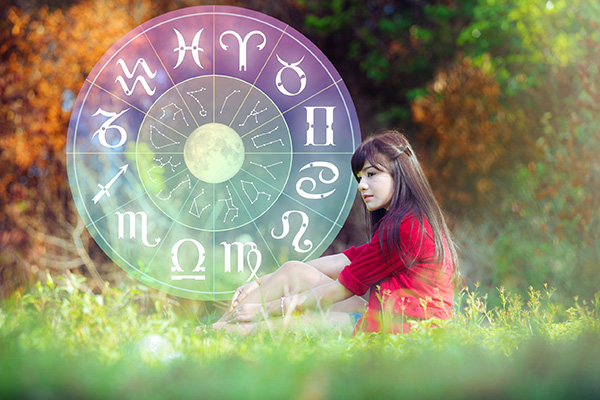Revealing Your True Abilities and Untapped Skills
 Being self-aware is fundamental for personal development, satisfaction, happiness, and achievement. By really comprehending our individual strengths, talents, and hidden abilities, we unlock our genuine potential and purpose, paving a clearer route towards an improved life.
Being self-aware is fundamental for personal development, satisfaction, happiness, and achievement. By really comprehending our individual strengths, talents, and hidden abilities, we unlock our genuine potential and purpose, paving a clearer route towards an improved life.
By acknowledging our skills and limitations, we cultivate a sense of direction that aids us in making decisions aligned with our core beliefs and goals. When we embrace self-awareness, we acquire the means to lead a more intentional, empowered, and rewarding life. It is the gateway to realizing our true potential.
This enhanced self-awareness allows us to appreciate our uniqueness and build confidence in our decisions. It acts as a compass for establishing realistic objectives and recognizing growth opportunities. Moreover, understanding our distinct characteristics nurtures resilience as we confront challenges with a sense of purpose and adaptability.
Additionally, self-awareness fortifies our relationships by fostering empathy and emotional intelligence. By grasping our own thoughts and feelings, we become more capable of connecting with and assisting others.
Psychic readings are a potent means for uncovering these inherent qualities, enabling you to align with your highest potential and commence the journey towards your best life.
At Psychic Access, we hold that self-awareness is vital for transformation. Our talented psychics, devoted to their vocation, have dedicated their lives to aiding others in achieving greater self-understanding. Upholding the highest standards of precision, professionalism, and compassion, our team provides readings that illuminate your journey and empower you to embrace your authentic strengths.
There is only one of you in all time, this expression is unique, and if you block it, it will never exist through any other medium; and be lost. The world will not have it ~ Martha Graham
How Psychic Readings Uncover Your Strengths
Many individuals navigate through life unaware of their complete potential. They may feel adrift, uncertain of their capabilities, or unclear about the best course of action. Psychic readings function as a mirror, reflecting the unique qualities and strengths that might have been overlooked or undervalued.
Affirm Your True Talents: A psychic reading can affirm the abilities you already sense within yourself. Whether you possess a natural inclination for healing, creativity, leadership, or intuition, a psychic can validate these talents and motivate you to develop them further. This affirmation can hold particular power for those grappling with self-doubt or feelings of inadequacy.
Uncover Your Hidden Gifts: Beyond affirming known talents, psychic readings can illuminate strengths you may not have recognized. You may possess a profound spiritual connection that enables you to guide and uplift others or a unique problem-solving ability that distinguishes you. By bringing these gifts to light, psychics can assist you in maximizing your potential and seizing fresh opportunities.
Identify Your Passion and Purpose: Individuals who seek psychic readings often gain unexpected insights into their life’s mission and soul journey. A psychic can interpret current energy patterns, past experiences, and future possibilities to help you grasp your soul’s intentions. With this clarity, you can make empowered choices that resonate with your true self and enrich your life.
Embrace Genuine Living: One of the most significant advantages of self-awareness is the ability to live genuinely. When you comprehend your strengths and gifts, you can make choices that mirror your true nature rather than conforming to societal expectations or external pressures.
Conquer Fear and Doubt: Fear and uncertainty often hinder us from chasing our passions and recognizing our full potential. Psychic readings offer reassurance and clarity that help you overcome internal barriers limiting your growth. By acknowledging your strengths, you can advance with greater confidence and resilience.
Make Empowered Decisions: When you are conscious of your talents and passions, making career and life choices becomes more straightforward. A psychic can provide insights into the best paths to take, ensuring you opt for opportunities that align with your genuine self. Whether you are contemplating a career shift, launching a new endeavor, or seeking a deeper sense of purpose, a reading can afford you the guidance required to make informed decisions.
Enhance Your Relationships: Self-awareness also enriches relationships by aiding you in understanding your communication style, emotional needs, and interpersonal strengths. A psychic reading can disclose how you engage with others and offer advice on nurturing meaningful connections. By embracing your authentic self, you naturally attract relationships that support and elevate you.
Our deepest fear is not that we are inadequate. Our deepest fear is that we are powerful beyond measure. It is our light, not our darkness that most frightens us. ~ Marianne Williamson
The Psychic Access Advantage
Finding a reliable and adept psychic is crucial for obtaining accurate and valuable readings. At PsychicAccess.com, we take pride in our thorough selection process to ensure our consultants are leaders in the field.
Becoming a Psychic Access Consultant is a significant achievement. Only one in twenty applicants meets our rigorous selection criteria, which includes background checks, skill assessments, and identity verification. This guarantees that when you consult a psychic on our site, you can be confident they are genuine professionals who bring integrity, commitment, and extensive experience to each reading.
At Psychic Access, we are dedicated to creating a secure, inviting, and trustworthy atmosphere where clients can connect with psychics who genuinely care. Our mission is to foster profound connections that extend beyond a solitary reading, offering ongoing guidance and support on your path of self-discovery.
The journey towards self-awareness is one of the most gratifying routes you can undertake. By recognizing your strengths and embracing your hidden gifts, you can unlock a life filled with purpose, passion, and fulfillment. Psychic readings act as a powerful instrument for this self-exploration, offering clarity and direction when you need it most.
At PsychicAccess.com, we are here to support you at every turn. Our passionate consultants are ready to assist you in uncovering your true potential and guiding you towards a more authentic and empowered existence. Whether you seek affirmation of your talents, insights into your purpose, or clarity regarding your path, we are dedicated to providing you with genuine guidance, profound insight, and a trusted space for spiritual exploration.
Ultimately, self-awareness is a continual journey that necessitates reflection, honesty, and a willingness to evolve. It invites us to delve into our core identity and discover the characteristics that empower us to contribute uniquely to the world.
Embark on the first step today – connect with your preferred Psychic Access advisor and uncover the power of self-awareness. Your true strengths and hidden talents are poised to be discovered.
|
Receive daily insights of psychic wisdom and spiritual inspiration from our talented team of psychic advisors at PsychicAccess.com. We post a new blog entry every day on our official blog site at PsychicBloggers.com. All our articles are crafted specifically for your enlightenment and growth by one of our skilled team of professional psychics. We are committed to sharing our knowledge and experiences, striving to keep you informed about the latest happenings in psychic phenomena, divination, metaphysics, energy work, spiritual life design, the paranormal, and esoteric practices. If you are new to the Psychic Access wisdom community, your first reading with us is FREE with any available psychic of your choice. Yes, we are that confident you are going to love us! Join us now at PsychicAccess.com. |
Revealing Your Genuine Strengths and Untapped Talents
Each of us carries unique strengths and talents that define our identities. Nevertheless, many of us navigate life without thoroughly exploring or utilizing these abilities. Revealing your genuine strengths and untapped talents can foster personal growth, bolstered self-confidence, and a more rewarding life. In this piece, we will emphasize the significance of uncovering and enhancing your true capabilities while providing practical suggestions to aid you in this endeavor.
To begin, it is essential to understand the distinction between strengths and talents. Strengths are the innate qualities or skills that invigorate us when we engage in them. They are activities we excel at and enjoy. Talents, by contrast, may often be concealed or undiscovered abilities that can evolve into strengths through practice and cultivation. Revealing your genuine strengths involves recognizing and utilizing the skills you already possess, while investigating untapped talents necessitates a willingness to venture beyond your comfort zone and try novel experiences.
A primary step in revealing your genuine strengths and untapped talents is self-reflection. Dedicate time to consider your past experiences, identifying activities or tasks you sincerely enjoyed and excelled in. What comes effortlessly to you? Which activities enable you to lose track of time? These indicators often point to your genuine strengths. Additionally, contemplate the talents or skills you have always been eager to pursue but never had the chance to explore. What pursuits or hobbies have you longed to try? Pinpointing these areas of interest can assist in revealing untapped talents.
Once you have recognized your genuine strengths and untapped talents, nurturing and cultivating them is vital. This can be accomplished through various means, including enrolling in classes or courses that align with your interests, seeking mentorship or guidance from specialists in the relevant area, or simply allocating time daily to practice and enhance your skills. Bear in mind that nurturing your talents requires time and dedication, so be patient with yourself and savor the learning journey.
Another effective approach to revealing your genuine strengths and untapped talents is to seek feedback from others. Occasionally, we may not recognize our abilities as clearly as others do. Request perspectives from trusted friends, family members, or colleagues who can offer an unbiased viewpoint on your strengths and talents. Their insights can deepen your understanding of your abilities and guide you on how to further cultivate them.
Moreover, do not hesitate to take risks and step outside of your comfort zone. Exploring new activities and talents can be daunting, but it is often through these ventures that we uncover hidden strengths and passions. Embrace uncertainty and remain open to new possibilities. Remember, failure is a natural component of growth and setbacks should be viewed as learning opportunities rather than hindrances.
Revealing your genuine strengths and untapped talents is a continual expedition. As you refine and develop your abilities, you may uncover new strengths and talents that were previously unknown. Embrace this journey of self-exploration and celebrate your unique gifts. By revealing and utilizing your genuine strengths and untapped talents, you can lead a more meaningful and purposeful existence. Continue reading

















